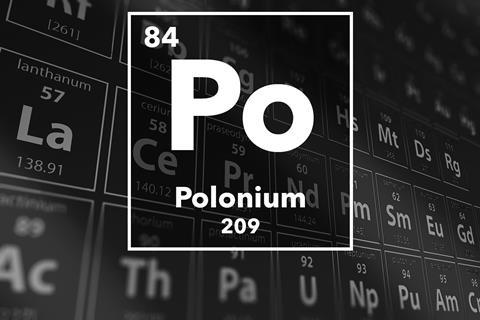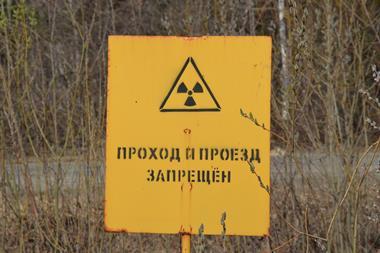Chris Smith
Hello, this week in Chemistry in its element the story of a substance that was named to snub Russia, power space probes keeps paper static free and has even been used as a murder weapon in London. To reveal the secrets of Marie Curie's element, and that's polonium, here's Johnny Ball:
Johnny Ball
Polonium (element 84) was discovered in 1898 and named after Poland, the homeland of Marie Curie (nee Skłodowska) who found it with her husband Pierre Curie. This loyalty was a direct affront to Russia who had dominated Poland for so long. The only way she could become educated whilst a teenager, was by risking imprisonment by the Russians by attending secret underground schools, which had to change locations every couple of days. It was only by escaping to Paris, following her older brother and sister, that she was able to forge a career. She was so poor in the early years in Paris, that she sometimes fainted through lack of food. Still she worked tirelessly.
In 1894 she met Pierre, who had made a name for himself in discovering piezoelectricity and was one of her lecturers. They married in July 1895. She wore a black dress as it would be serviceable for her work in the laboratory. They did not exchange rings, but bought each other a bicycle, on which they honeymooned.

X-rays had been discovered by Roentgen (November 1895) and uranium radiation by Becquerel (February 1896) in Paris. Working with him (1898), Marie coined the phrase 'radio activity' and decided to make this here object of study, because no one else was doing it. They realised that radiation was coming from the very atoms and that this was a sign of the atoms breaking up. Only by studying the break up of atoms through radiation, were scientists able to clearly understand how atoms are made up. For this the Curies and Becquerel shared the Nobel prize for physics in 1903.
The discovery of polonium (July 1898) was no mean task. Pitchbende, a uranium bearing ore, seemed to be far to radioactive than could be accounted for by the uranium. The couple got the waste ore free, after the uranium had been removed. They sieved and sorted by hand, ounce by ounce, through tons of pitchblende before tiny amounts of polonium were discovered. With the polonium extracted, there was clearly something far more radioactive left behind and soon they had isolated the much more important element padium (December 1898), which they so named as it glowed in the dark.

Pierre died in a tragic accident in 1906, which may have been the result of the pain he was in through radiation burns and sickness. For discovering polonium and radium, Marie received the Nobel prize for chemistry in 1911, becoming the only woman to receive two such prizes.
Natural polonium Po-210 is still very rare and forms no more than 100µg per ton of uranium ores. As well as Po-210, isotopes Po-211, -212, -214, -215, -216 and -218 all occur in the chains of radioactive elements, as they decay to form lead Pb-208. However, they exist for very little time indeed: Po-212 comes in two forms, one having a half life of 45.1 seconds and the other of 300 nanoseconds (300 one-billionths of a second).
Because it is so rare, polonium is made by first making bismuth (also found in pitchblende). Bismuth-209 is found and then artificially changed to bismuth-210 which then decays to form polonium-210.

Polonium has a position in the periodic table that could make it a metal, a metalloid or a nonmetal. It is classed as a metal as its electrical conductivity decreases as its temperature rises. Because of this property it is used in industry to eliminate dangerous static electricity in making paper or sheet metal.
Because of its short half-life, its decay generates considerable heat (141W per gram of metal). It can be used as a convenient and very light heat source to generate reliable thermoelectric power in space satellites and lunar stations, as no moving parts are involved.
Chris Smith
Johnny Ball lifting the lid on the radioactive element polonium discovered by Marie Curie and her husband Pierre. Next time on Chemistry in its element, we remain radioactive much like the substance itself with earth scientist Ian Farnan.
Ian Farnan
Anyone familiar with the iconic image of the mushroom cloud understands the tremendous explosive power of a correctly controlled detonation of plutonium. The energy density is mind-boggling: a sphere of metal 10cm in diameter and weighing just 8kg is enough to produce an explosion at least as big as the one that devastated Nagasaki in 1945.
Chris Smith
Ian Farnan with what promises to be an explosive edition of Chemistry in its element next week. I'm Chris Smith, thank you for listening and see you next time.













No comments yet